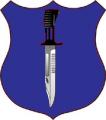Starting this as I think this worthy of our collective attention rather than resting in the Blog.
See here.
IMO, I think EFV and V-22 are just bad ideas for a non-existent problem, created from an imagined reality. Yes amphibious Operations will be a necessary part of future warfare, but I have doubts that current ideas actually deliver that in a useful way.
...BTW, I have a lot of time for the Corps (USMC). Slightly odd chaps, but I actually believe the rest of the world can learn some useful things from the USMC if it is in any way serious about expeditionary operations.














Bookmarks